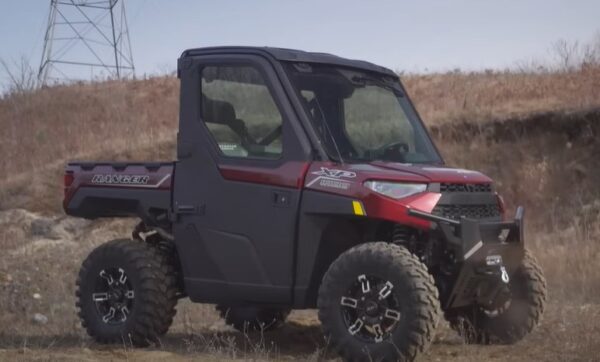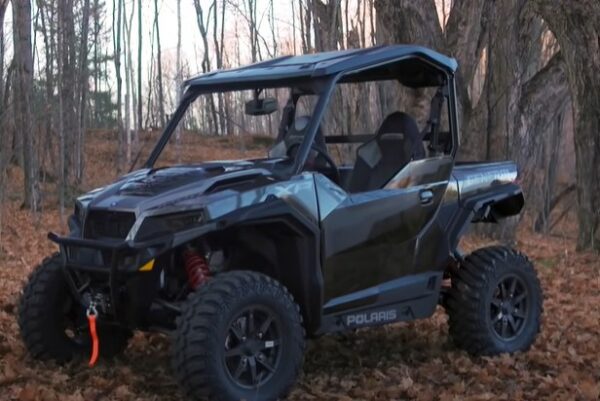The Honda Pioneer 700 is a popular choice for off-road enthusiasts and work site haulers alike. With its reliable engine, hauling capacity, and impressive features, it’s no surprise that this vehicle has gained such popularity.
However, like any vehicle, the Pioneer 700 is not without its problems. In this blog post, we’ll discuss some common issues that owners may face with their Pioneer 700 and provide some solutions to help keep your ride running smoothly.


1. Engine and Transmission Issues
Struggling to Start
Some owners have reported issues with their Honda Pioneer 700 struggling to start, especially after being left unused for an extended period of time. This could be due to a weak battery, starter motor problems, or fuel delivery issues.
To prevent this problem, you have to regularly check and maintain the battery’s charge and replace it as needed. It is also important to keep the fuel tank clean and use high-quality fuel to avoid any clogging or buildup in the fuel delivery system.
Follow proper storage procedures when leaving the vehicle unused for an extended period of time. This includes disconnecting the battery, draining the fuel tank, and using a fuel stabilizer.
Overheating Engine
Some users have experienced issues with their Honda Pioneer 700’s engine overheating, especially during heavy use or in hot climates. This could be due to inadequate cooling or a malfunctioning radiator.
To prevent this problem, regularly check and maintain the vehicle’s cooling system. This includes checking the coolant levels and ensuring that the radiator and cooling fan are working properly. It is also recommended to avoid driving in extreme heat for extended periods of time and to take breaks to allow the engine to cool down.
Slipping Transmission
There have been instances where the automatic transmission in the Honda Pioneer 700 may slip out of gear, which could be a sign of internal wear or the need for a fluid change. This can cause a loss of power and can be dangerous, especially when driving on rough terrain.
Make it a point to check and change the transmission fluid according to the manufacturer’s recommendations. It is also recommended to avoid aggressive driving and shifting gears while the vehicle is in motion.
2. Electrical Problems
Any issues with the electrical components can lead to performance problems and potentially even render your vehicle unusable.
Let’s take a closer look at some common electrical problems that owners may encounter with their Pioneer 700.
Faulty Sensors
Faulty sensors in the Honda Pioneer 700 often manifest through erratic engine behavior, such as sudden stalling, power loss, or difficulty starting. A tell-tale sign is an illuminated check engine light on the dashboard.
To resolve this, first use a diagnostic scan tool to identify which sensor is malfunctioning. Common culprits include the oxygen sensor or the throttle position sensor. Once identified, replacing the defective sensor with an OEM part is recommended to ensure compatibility and reliability.
Battery Drain
Battery drain can be particularly vexing for Pioneer 700 owners. This may occur due to parasitic draws when the vehicle is off, often due to accessories left on or by a short circuit in the electrical system.
To troubleshoot, use a multimeter to check for a current draw with the vehicle off. If detection exceeds 50 milliamps, there’s a drain that needs addressing. Tracing the cause could involve checking each circuit or electrical component until the offending drain is found.
Regularly maintaining the battery, ensuring clean and tight connections, and possibly installing a battery disconnect switch can help mitigate this issue.
Inconsistent Performance of Electronic Accessories
This often indicates issues with the wiring harness or fuses. Inspect the wiring harness for signs of frayed wires, corrosion, or loose connections, especially if you notice accessories flickering or not functioning correctly. Wires exposed to heat or the elements can degrade over time, leading to shorts or breaks in the circuit.
Replace any damaged wires and use dielectric grease to protect connections from moisture. For fuse-related problems, keep a supply of spare fuses on hand and replace any that have blown, being sure to investigate what caused the fuse to blow to prevent future occurrences.
3. Suspension and Handling
The suspension and handling of the Honda Pioneer 700 are key components that contribute to its overall performance. However, certain issues may arise over time due to wear and tear or improper maintenance.
Worn Shocks and Bushings
One common problem that owners may face with their Pioneer 700 is worn shocks and bushings. These vital parts are responsible for absorbing shocks and vibrations from rough terrain, providing a smooth ride. With frequent use, the shocks and bushings can become worn out, leading to a bumpy and uncomfortable ride.
To avoid this issue, it is recommended to regularly check and replace these components as needed.
Alignment Problems
Another possible problem with the suspension and handling of the Honda Pioneer 700 is alignment issues. Improper alignment can cause uneven tire wear and affect the vehicle’s overall handling. This is especially important for off-road vehicles like the Pioneer 700, as accurate alignment is crucial for navigating through challenging terrain.
To prevent alignment problems, it is essential to have regular alignments performed by a trained professional. It is also recommended to check and adjust the alignment after any significant impacts or changes in tire pressure.
4. Drivetrain and Differential
CV Joint Wear
The constant velocity joints are an integral part of the drivetrain, responsible for transferring power from the engine to the wheels while also allowing for suspension movement and steering inputs. Over time, these joints can become worn due to regular use and exposure to the elements. This can lead to clicking or popping sounds when turning, vibrations in the steering wheel, and even loss of power to the wheels.
Differential Issues
Another problem that may occur with the Pioneer 700’s drivetrain and differential is related to the differential itself. The differential is responsible for distributing power evenly between the wheels, allowing for smooth turns and optimal traction. However, issues such as leaks or worn gears can affect its performance and cause problems with power delivery and handling.
So what can be done if you encounter these problems with your Pioneer 700? Here are some practical solutions to keep your drivetrain and differential running smoothly:
- Regular maintenance: One of the best ways to prevent CV joint wear and differential issues is to stay on top of regular maintenance. This includes inspecting and replacing worn or damaged parts, as well as keeping the differential properly lubricated.
- Upgrading to heavy-duty components: If you frequently use your Pioneer 700 for heavy hauling or off-road adventures, consider upgrading to heavy-duty drivetrain components. These can provide increased durability and better performance under strenuous conditions.
- Monitoring for signs of wear: Be vigilant about checking for signs of CV joint wear, such as the aforementioned clicking noises while turning or vibrations during operation. Early detection can prevent more significant damage.
- Addressing differential issues promptly: For differential problems, tackle leaks immediately by replacing seals and gaskets, and if the issue is with worn gears, consult an experienced mechanic who may recommend a rebuild or replacement depending on the severity.
5. Braking System
While its hydraulic disc brakes are known for their durability and stopping power, there are a few common issues that owners may encounter.
Brake Wear
One problem that many Pioneer 700 owners face is brake wear. Over time, the brake pads and rotors will begin to deteriorate and need replacement. This can result in squealing or grinding noises when braking, as well as reduced stopping power.
To avoid this issue, it is important to regularly inspect and replace the brake pads and rotors as needed, following Honda’s recommended maintenance schedule.
Fluid Leaks
Another potential problem with the braking system is brake fluid leaks. Any leak in the brake lines or connections can lead to a loss of hydraulic pressure, resulting in compromised braking performance. This issue should be addressed immediately to ensure safe operation of the vehicle. If you notice any signs of a brake fluid leak, such as low levels or wet spots under the vehicle, it is important to have it checked and repaired by a certified mechanic.
To prevent these issues from occurring, regular maintenance and proper use of the brakes are key. It is important to avoid any harsh or sudden braking, as this can accelerate wear on the brake components. Regularly checking the brake fluid levels and replacing old or contaminated fluid can help maintain the performance of your Pioneer 700’s braking system.
6. Body and Frame
Rust and Corrosion
This can happen due to exposure to harsh weather conditions, heavy use in off-road environments, or lack of proper maintenance. If left untreated, rust and corrosion can lead to structural damage and compromise the integrity of your vehicle.
To prevent rust and corrosion, regularly clean and wash your vehicle after use, especially if you’ve been in muddy or wet conditions. Apply a protective coating or wax to the body and frame can help prevent rust from forming.
If you do notice signs of rust or corrosion on your Pioneer 700, it’s crucial to address the issue immediately. This may involve sanding down the affected area and applying a rust converter or primer before painting over it. It’s important to use high-quality paint that is specifically designed for automotive use.
Damage to Body Panels
Your bike’s body panels can crack or break upon impact, such as hitting a tree branch or rock while off-roading, or due to exposure to extreme temperatures. To prevent this, it’s important to be mindful of your surroundings while driving and avoid exposing your vehicle to extreme heat or cold for extended periods.
If you do encounter damage to the body panels on your Pioneer 700, replacement parts are readily available from Honda dealerships or online retailers. It’s important to use genuine Honda parts to ensure proper fit and function.
Regular inspections can help identify any potential issues with the body and frame. This includes checking for any rust or corrosion, as well as inspecting plastic panels for cracks or damage. Addressing these issues early on can save you time and money in the long run.
7. Other Miscellaneous Problems
Aside from the common problems mentioned earlier, there are a few other issues that Honda Pioneer 700 owners may encounter during their ownership. These problems can range from minor nuisances to potentially dangerous situations if not addressed promptly.
Noise and Vibration
One of the most common issues faced by Honda Pioneer 700 owners is excessive noise and vibration during operation. While some level of noise and vibration is expected with any off-road vehicle, excessive amounts can indicate underlying problems. This can range from simple issues such as a loose component or body panel to more serious issues like engine misfires or transmission problems. It is important to address these issues promptly to prevent further damage and maintain the smooth operation of your Pioneer 700.
Solution
To address the issue of excessive noise and vibration, it is recommended to regularly inspect your Pioneer 700 for any loose components or body panels. Tighten any loose bolts or screws and make sure all body panels are securely attached. If the problem persists, it is best to take your vehicle to a certified Honda mechanic for further diagnosis and repair.
Wear and Tear on Seats and Belts
Another problem that may arise with regular use of the Honda Pioneer 700 is wear and tear on the seats and seatbelts. The constant exposure to rough terrain, dirt, and water can cause these components to deteriorate over time. This not only affects the overall comfort of the ride but also compromises the safety of the occupants. Regularly inspect and replace worn-out seats and seatbelts to ensure a safe and comfortable ride.
Solution
To prevent wear and tear on the seats and seatbelts, Clean and maintain these components. Use a mild soap and water solution to clean the seats, then use a protectant specifically designed for vinyl or leather to keep them in good condition.
For seatbelts, wipe them down with a damp cloth and inspect for any fraying or damage. Replace any worn-out seatbelts immediately to ensure the safety of all occupants.
In Summary
While the Honda Pioneer 700 is capable of handling tough terrain, it does have some issues owners should be aware of. Following regular maintenance and using the solutions discussed can help minimize common problems with the Pioneer 700 and maximize the enjoyment of this machine.
With proactive care and the right repairs when needed, you can keep your Pioneer 700 running strong for years to come. Overall, it remains a reliable side-by-side for recreation and work as long as its quirks are properly addressed.


I’m Harvey, and I know everything there is to know about offroad vehicles. I’ve been driving them since I was a kid, and I love nothing more than exploring the great outdoors in my Jeep, ATV or UTV. I grew up in a small town in Idaho, and that’s where my love for offroad vehicles started. There were no paved roads where I lived, so we had to drive on dirt trails to get around. And that’s when I fell in love with the thrill of being able to go anywhere I wanted, no matter how rough the terrain was. LinkedIn | Instagram



